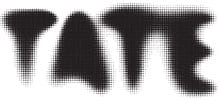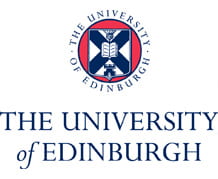Organized byThe Canadian Women Artists History Initiative, 27 November 2010 Concordia University, Montreal
Question for exploration: How does documentation shape thought and history in ways that might be important to those curating feminist exhibitions and those writing the history of such exhibitions. What conceptual and pragmatic challenges and possibilities does documentation raise in a feminist context?
 8:30 – 9:00 Welcome. Muffins, tea, coffee
8:30 – 9:00 Welcome. Muffins, tea, coffee
9:00 – 9:30 Opening remarks and introductions
9:30 – 11:10 Reesa Greenberg:
Documenting Exhibitions on the Web: A Feminist Imperative?
[presentation and discussion with participants]
11:10 – 11:30 Break
11:30 – 12:30 Bill Kirby: Using the Web to Document Contemporary Arts Practices: The Centre for Contemporary Canadian Art
[presentation and discussion with participants]
12:30 – 2:00 Lunch
2:00 – 3:30 Ruth Phillips, The Digital R(E)volution of Museum-Based Research: Can Feminist Documentation Benefit from an Experiment in Aboriginal Art History?
[presentation and discussion with participants]
3:30 – 4:00 Closing Discussion
Notes
This seminar was organized as an exploration of how documentation shapes thought and history in ways that might be important to those curating feminist exhibitions and those writing the history of such exhibitions. Through a series of three presentations and group discussions, participants assessed the challenges and possibilities – both conceptual and pragmatic – that are raised for feminism by practices of documentation.
Reesa Greenberg “Documenting Exhibitions on the Web: A Feminist Imperative?”
The opening presentation focused on the documentation of exhibitions and the need for a feminist exhibition history. Beginning with a discussion of the contemporary importance of exhibitions as the primary forum in which people encounter art, Reesa Greenberg walked participants through a brief chronology of the new academic field of exhibition history and the intellectual models it has created. Precisely because it is a developing field there is real potential for feminism to have an impact on how its terms and models are constructed, and yet women and feminism have not, thus far, been powerfully present within it. There is no history of feminist exhibitions in North America, not least because documentation of many of its landmark events is scanty.
Invoking Lorna Roth’s term “cognitive equity” – a process in which stereotypes, however unconscious, are eliminated at the very moment of inception — the presentation emphasized the possibilities of the web as a
new and liberatory form for the documentation and transmission of knowledge surrounding exhibitions. Web technology has the potential to be less hierarchical, creating possibilities for greater variety in exhibition materials; it is more democratic, in that it makes art and information accessible to more people both within and across cultures; it expands the exhibition timeframe in that it can encompass the exhibition as process as well as event; through linking, it diminishes the uniqueness of events and provides a context that breaks the masterpiece model; it is interactive, thus promoting the recognition that knowledge is not finite; and by increasing the amount of data available to people it enables them to work with information in different ways, thus enhancing transparency.
The presentation concluded by looking at the web presences of three exhibitions of feminist orientation with an eye to developing a set of best practices for feminist documentation. Issues discussed included (but were not limited to): the clarity information presented and the impact of different technical ways of presenting it; the ability for increased breadth and depth of information presented in dynamic, not static, forms; the breadth of narrative voices that can be encompassed, including curators and artists, thus offering more personalized and individualized perspectives on knowledge; the importance of the web for archiving installation views, audio-tours, press coverage; the relation of museum websites to the broader ideological apparatus of the museum; the feminist potential of the web as a space not only for documenting but for curating exhibitions; and the issue of the relative prestige of the web as a medium for curatorial and academic practice.
Bill Kirby: Using the Web to Document Contemporary Arts Practices: The Centre for Contemporary Canadian Art
This presentation was a hands-on exploration of the website of the internet-based Centre for Contemporary Canadian Art, by its director Bill Kirby. Although the CCCA is not feminist in its orientation, women form a majority of the artists included on the site, and exploration of their representation offered an opportunity to discuss, in a very pragmatic way, a series of prototypes that illustrated the real-life challenges of building and
maintaining artist documentation on the web. Relevant issues from a feminist perspective included questions about who has the power to determine content; about the web’s potential to preserve types of information that have not, conventionally, been privileged; and about the potential utility of the site for teaching feminist art history and building a feminist exhibition history. Questions about the democratization of knowledge and the institutional norms of the art-world were key. The CCCA site, for example, is artist-driven; artists decide what information to include, and are able to update their own entries, making them as deep and complete as they wish. Likewise, the presentation emphasized the cost- effectiveness and flexibility of the web as an important aspect of its anti- hierarchical potential. Thus, the site has the built-in potential to incorporate quick, immediate and informal online interviews, which stand in contrast to the costly (and so more socially restricted) nature of more formal video portraits. Time and funding, however, remain constant challenges for independent documentary projects such as this. Participants were fully alive to the impact of these factors on their own ability to create projects that fully utilize the potential for non-hierarchical and intellectually empowering documentation unleashed by the web.
Ruth Phillips The Digital R(E)volution of Museum-Based Research: Can Feminist Documentation Benefit from an Experiment in Aboriginal Art History?
In the final presentation Ruth Phillips discussed the museum documentation practices surrounding First Nations art and artefacts. Her presentation — which offered a preview of her new book Museum Pieces (McGill-Queen’s University Press, 2012) – drew on Phillips’s personal experience both as a researcher involved in a number of collaborative research networks, and as former director of the University of British Columbia’s Museum of Anthropology. Throughout, her emphasis was on building ethically and politically responsible approaches to the documentation of artworks and objects created by populations that have been historically marginalized and oppressed. Discussion afterwards worked to connect the postcolonial nature of Phillips’ work with the priorities of a feminist art history.
Focusing on collections, rather than exhibitions, Phillips described a plurality of research and documentation models at play in Canada. The digital revolution, together with social changes affecting Canada’s indigenous population, has altered our understanding of the role of the museum. Historically, museums embraced curatorial hierarchies and positivist research practices modeled on a “salvage paradigm” of documenting the remnants of Aboriginal culture, while art galleries aestheticized and fetishized “primitive” art. Collections of artefacts were routinely dispersed between museums, disrupting their original integrity, indigenous knowledge about objects was devalued, and communities were cut off from their material history as artefacts were removed from them and interred in storerooms and vaults accessible only to the specialist. Online catalogues of collections typically employ typological modes of classification based on colonialist groupings, they offer only “tombstone” records, and are replete with errors that frequently remain uncontested.
Currently, however, a variety of initiatives in Canadian museums and universities are challenging those models. The move to open storage, for example, has facilitated access to collections. Likewise, the Great Lakes Research Alliance for the Study of Aboriginal Arts and Cultures uses the web to explode traditional models of collections documentation. GRASAC is an interdisciplinary team of indigenous and non-indigenous experts – including linguists, elders, art historians, anthropologists, historians, and legal experts – working together to build electronic structures that will facilitate greater social and cultural justice. Researchers visit collections of indigenous artefacts worldwide and work together to make a variety of information and perspectives of the objects widely available. Contradictory statements are welcomed, fields can be modified, multiple photographs are provided, and stories are recorded. Above all, community-based local knowledge is recognized as essential for attribution and reclamation of artworks.
The presentation concluded with a challenge to consider whether the documentation on women’s art has also been historically skewed, affecting the kinds of knowledge that have been formed. Where, for example, is the visual culture of feminism? And what alternate kinds of information and record-keeping practices would lead to a more socially inclusive art history?










Leave a Reply